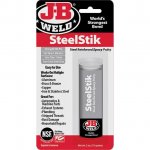SarahFair
Senior Member
I am posting this here because I know we have a lot of out of the box thinkers when it comes to fabrication.
I have an antique doorbell.
I'm actually marrying 2 doorbells together because the original bell has a very poor thudding ring, while the bell I want to use has a beautiful higher pitched ring you can hear through the whole house.
Unfortunately, I do not have the original turn knob for the better sounding bell.
The "key" post does not fit the slot to the gear, it's too skinny, so it's not catching the gear in order for it to turn.
I've tried filling it with everything I can think of, toothpicks, metal wire strips, brad nails, paper towel, etc, it all ends up slipping out after awhile.
Because of the configuration of each bell, gears can not be swapped.
Any ideas on a permanent* filler?
Permanent* meaning the bell has to come off from time to time for door maintenance or cleaning the bell.



I have an antique doorbell.
I'm actually marrying 2 doorbells together because the original bell has a very poor thudding ring, while the bell I want to use has a beautiful higher pitched ring you can hear through the whole house.
Unfortunately, I do not have the original turn knob for the better sounding bell.
The "key" post does not fit the slot to the gear, it's too skinny, so it's not catching the gear in order for it to turn.
I've tried filling it with everything I can think of, toothpicks, metal wire strips, brad nails, paper towel, etc, it all ends up slipping out after awhile.
Because of the configuration of each bell, gears can not be swapped.
Any ideas on a permanent* filler?
Permanent* meaning the bell has to come off from time to time for door maintenance or cleaning the bell.






